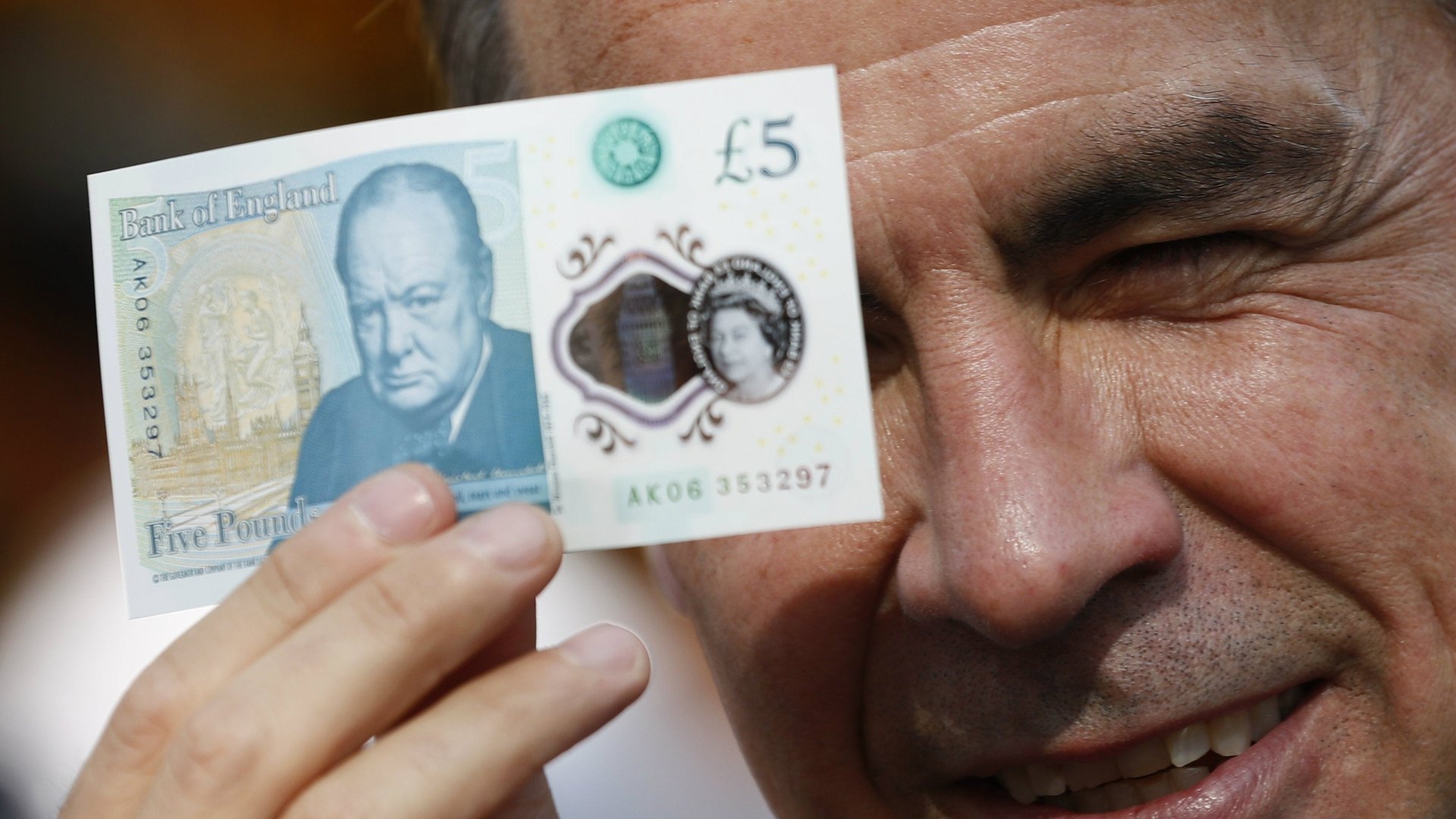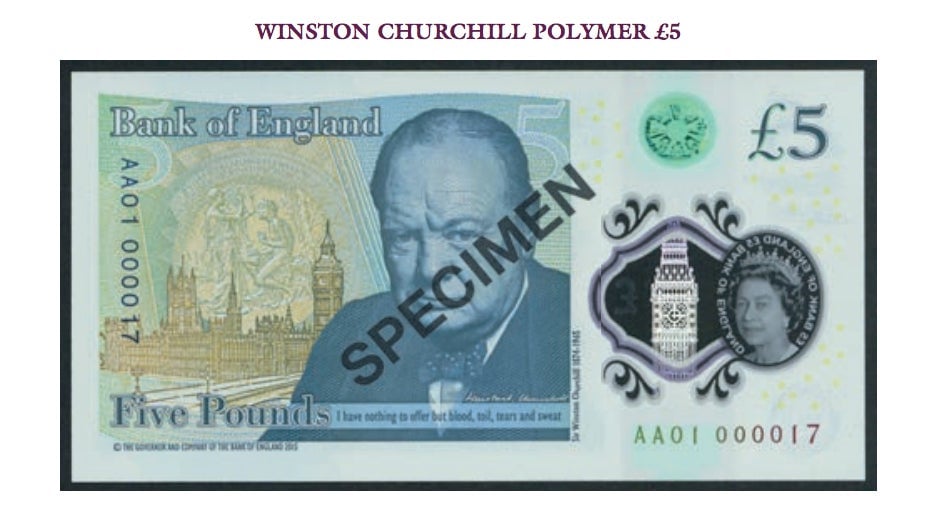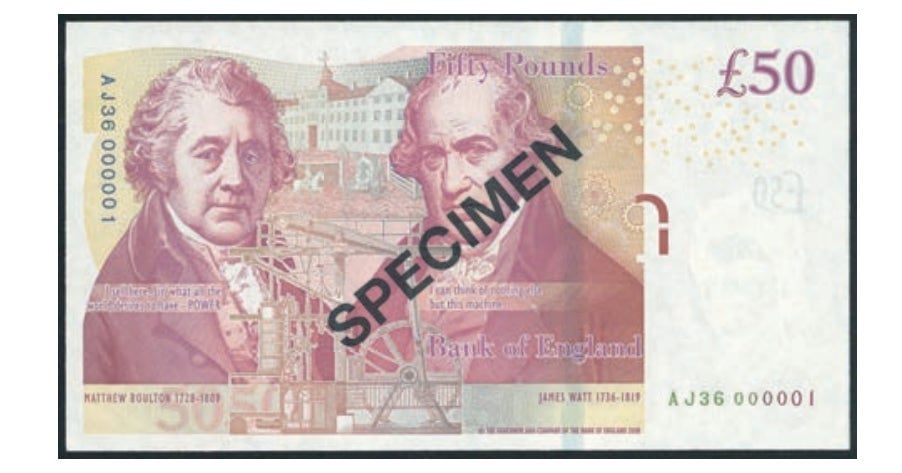At an unusual auction in London, collectors were willing to spend thousands of pounds for plastic £5 notes
Would you pay £4,150 ($5,292) for a £5 banknote? What if it was one of the first £5 notes printed with a new design and made of plastic? Still no? Well on Monday evening the Spink & Son auction house in central London was packed with people who would.


Would you pay £4,150 ($5,292) for a £5 banknote? What if it was one of the first £5 notes printed with a new design and made of plastic? Still no? Well on Monday evening the Spink & Son auction house in central London was packed with people who would.
The Bank of England put up for sale 601 banknotes, which had a total face value of £9,375. Most of the auction lots were made up of the new £5 notes that were released last month, made of polymer (for the first time) and featuring Winston Churchill. What makes them so special? They are some of the first ones printed and so have low serial numbers. The lowest available for the new fiver was AA01 000017—that’s the one that went for £4,150.

The auction brought in £203,820. That’s 21 times the face value of the notes. The rest of the lots (pdf) were banknotes with older designs but were the first ones printed with the signature of the BOE’s latest chief cashier Victoria Cleland. For example, a £20 note from 2014 with the serial number JH41 000001 sold for £5,200.
That wasn’t the largest bid. A £50 note with the serial number AJ36 000001 and a sheet of 60 new £5 notes each sold for £8,500. The rest of the lots were sold for between £250 and £2,400, aside from the first £10 note with Cleland’s signature which went for £3,800. The money was donated to three charities chosen by the BOE.

About 50 people attended the auction, a successful turnout, according to Spink’s Andrew Pattison, who said the house’s main sales normally get 20 to 30 people. Every banknote sold well over its estimate as well. There were also bidders online and over the phone, one winning bidder was Jesse McClure, the star of US reality TV show Storage Hunters.
“It was a colossal mixture of people,” Pattison said. “It’s a strange melting pot of people. It’s a bit like trainspotting but paying for the privilege. Collecting is not necessarily a rational thing.”
This is the fourth time the BOE has held a charity auction of its banknotes. The last one was in 2012 for the new design of the £20 note. The very first polymer £5 notes printed aren’t available to the general public. The first two go to the Royal Collection (one for the Queen and one for Prince Phillip) and the next ones are handed out at the discretion of the BOE.
While this auction is “very, very niche within a niche” (Pattison’s words), UK banknotes are a valuable collectors’ item. The hobby’s official name is notaphily and the International Bank Note Society says it has over 2,000 members in 90 countries. At a general British auction last night at Spink, one man sold a £20 note he bought in 2007 for five times the value he paid, Pattison said. Collecting currency also makes a good financial investment. In 2015, coins returned more stamps, jewellery, and art, according to Knight Frank’s Luxury Investment Index.